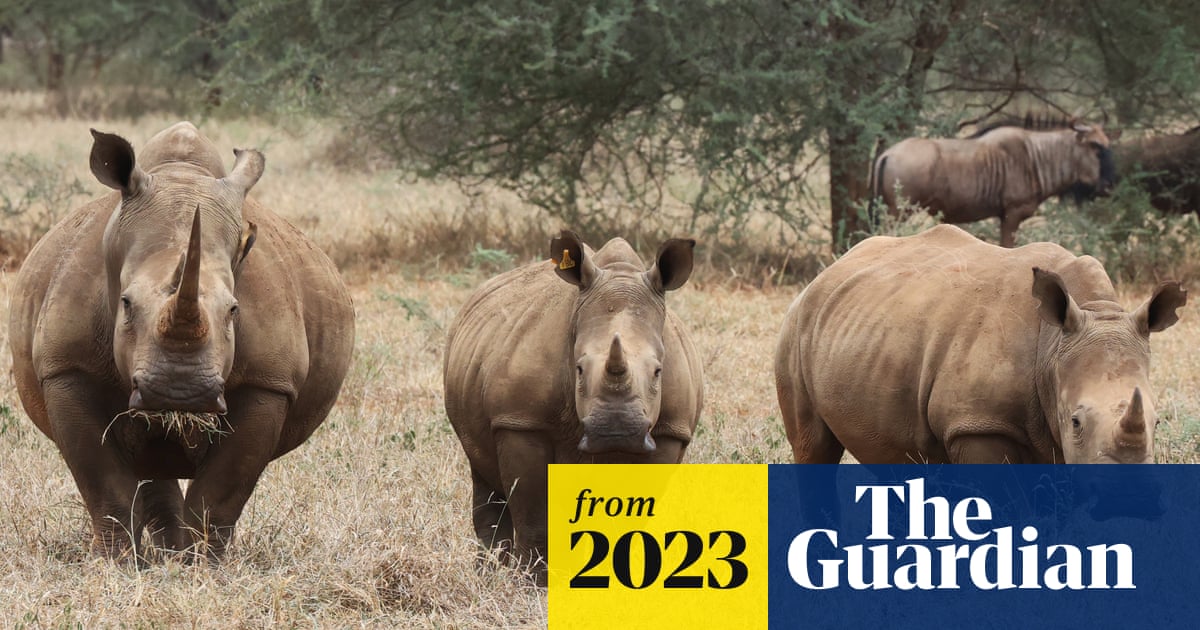Inside a stockade of tall wooden stakes, cattle are waiting to be let out for the day. Golden sunlight stutters through the acacia trees and lights up the homestead beyond, a large, bare-earth courtyard containing five neatly thatched mud-walled buildings.
Hygiene Moyo, 75, and her teenage granddaughter Lucricia live here, just outside one of Zimbabwe’s largest and most important national parks, Hwange. They take me to greet their favourite animal, Booster the bull, who comes trotting across the enclosure when called, pushing his nose forward to be scratched. Ten new calves mill around in a separate inner stockade, eagerly waiting to be reunited with their mothers. Not all of the herd, however, are present. Since the start of the year three cows have been killed by hyenas.
“They attack during the day,” says Hygiene. “The dogs sometimes drive them away, but there are so many of them now.” It isn’t the only danger: lions and elephants stroll through the isolated village of Ziga at night, and the latter regularly raid Hygiene’s maize crop, her main source of food.
These are the perils of living in an area called Tsholotsho, community land that is alongside the national park. It is a vast region of open woodland, about 70 miles north-west of the city of Bulawayo, and which is home to lots of hyenas, as well as about 45,000 elephants. Surprisingly, however, the community land on which Hygiene lives is now the setting for an ambitious rhino reintroduction project and – even rarer than the rhino itself – the programme has been instigated and welcomed by local people.
The day before I visited Hygiene’s homestead, I accompanied Kusasa and Thuza, two male rhinos, on an epic journey across Africa to be released into a fenced reserve. With this duo, Tsholotsho and Hwange become home to all of the continent’s “big five” animals (lion, leopard, buffalo and elephant are the others).
In terms of preserving African wildlife, Hwange is vital. This is not only because the elephant population is one of the largest in Africa but because the 14,600 km2 park is critical in what is known as Kaza, the Kavango Zambezi…
Click Here to Read the Full Original Article at Travel | The Guardian…
